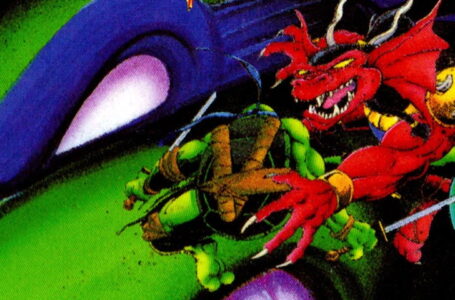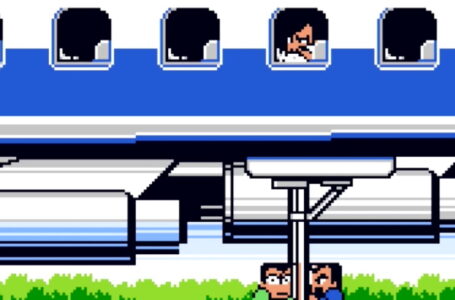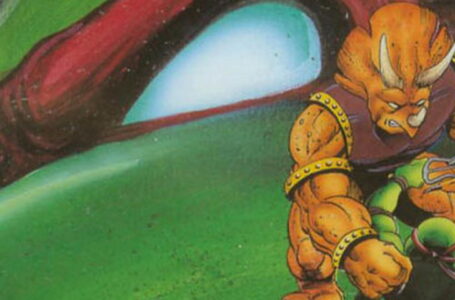Is the NES Teenage Mutant Ninja Turtles game worth playing today?
It’s fair to say that the main reasons people were particularly excited for the Teenage Mutant Ninja Turtles Cowabunga Collection were the original arcade game and the SNES version of Turtles in Time. But I suspect a fair few people picking the compilation up also have some nostalgia for — or at least some memories of — the 1989 NES release from Konami, which was also ported to a variety of home computers of the time.
Thing is, this game has always had a bit of a mixed reception over the years, dating right back to its original release. When it first came out, quite a few people were upset that it wasn’t a port of the arcade game, and many criticised its technical shortcomings. In more recent years, it’s one of those retro games that it’s quite fashionable to bash on — offhand I’m not entirely sure where this trend originated, but I suspect some popular YouTuber probably posted an angry rant about it at some point, and things just escalated from there.
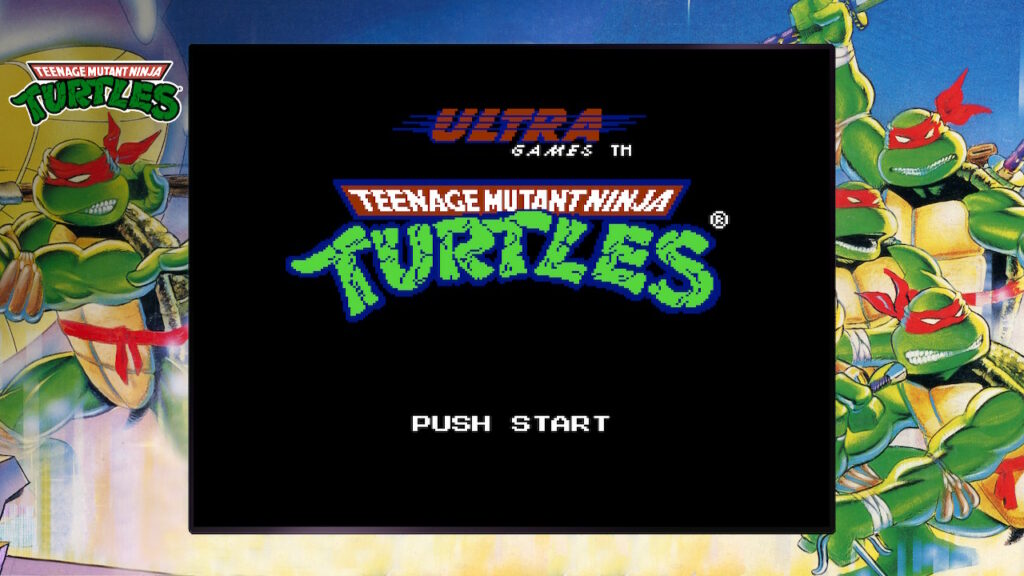
Is it really that bad, though? I must confess I didn’t have much experience with this game prior to picking up the Teenage Mutant Ninja Turtles Cowabunga Collection, so most of my “knowledge” of it is through second-hand accounts, articles in games magazines and the ever-questionable word of popular Internet opinion. So I’ve been giving it an honest to goodness go — albeit with Digital Eclipse’s optional enhancements that remove the excessive slowdown and sprite flicker from the original NES release — and I have to confess, I haven’t been having a terrible time.
Teenage Mutant Ninja Turtles for the NES, lest you’re unfamiliar, is not a belt-scrolling beat ’em up like its arcade counterpart. Rather, it is a side-scrolling platform game for the most part, with occasional forays into top-down exploration. Rather than being a four-player simultaneous affair like the arcade version, you take control of one of the Turtles at a time — with a Turtle running out of health representing them being “captured” (and thus rescuable at a later time) — as you work your way through the game’s six large stages.
The concept behind the game is that the Turtles have two main objectives to achieve: firstly, they need to rescue April O’Neil from the clutches of Shredder’s forces, and secondly, they need to hunt down Shredder in the hopes of acquiring his Life Transformer Gun, which is the only thing that will be able to turn Master Splinter from an anthropomorphic rat back into a man again. Business as usual for the Turtles, then, though to the game’s credit you rescue April almost immediately rather than her remaining a damsel in distress into perpetuity.
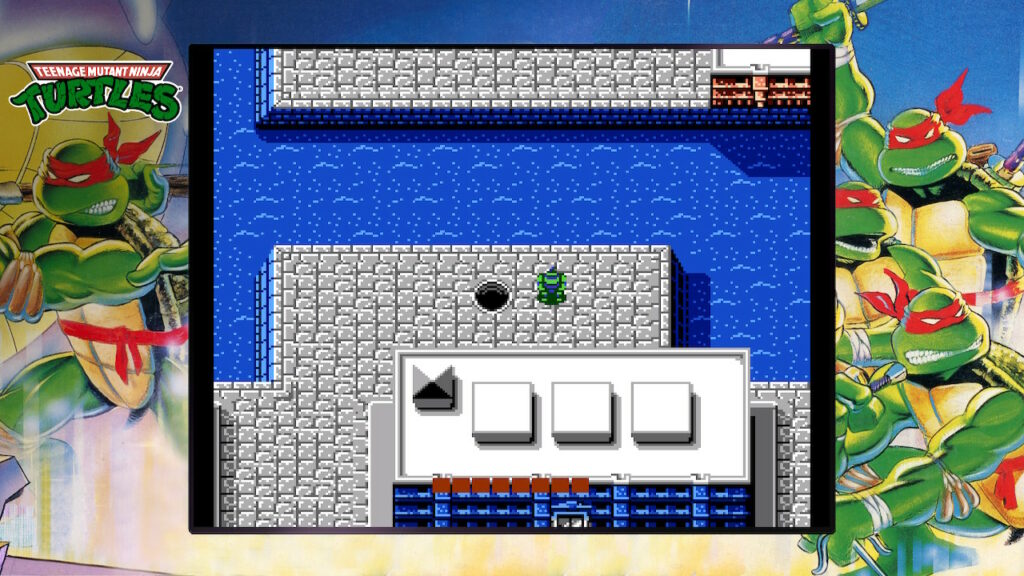
Most of the game’s six stages involve a top-down map of part of New York, with various building entrances and manhole openings allowing access to the side-scrolling substages. Some of these hold useful items such as pizza to restore the Turtles’ health; others provide a route to otherwise inaccessible areas; and a few are simply there as red herrings with a dead end to troll you.
Most of the side-scrolling stages are just a few screens long, and tend to conclude with a battle against one of the slightly more powerful regular enemy types as a sort of “miniboss” battle. Some are a little longer and more involved, but most involve finding a suitable way to deal with the enemies within (who respawn pretty much the moment you scroll back to their original spawn point if you’ve killed them) and negotiate obstacles in order to reach your current objective.
The four Turtles are all markedly distinct in terms of the way they handle, primarily through their method of attacking. Leonardo, for example, attacks with his dual katanas, which gives him a good medium-range attack, plus the way he swings them downwards allows him to attack foes that are low to the ground easily. By contrast, Donatello’s long bo staff is great for attacking at range — and particularly at poking enemies up the bum from underneath — but its slow speed often makes it a bit impractical.
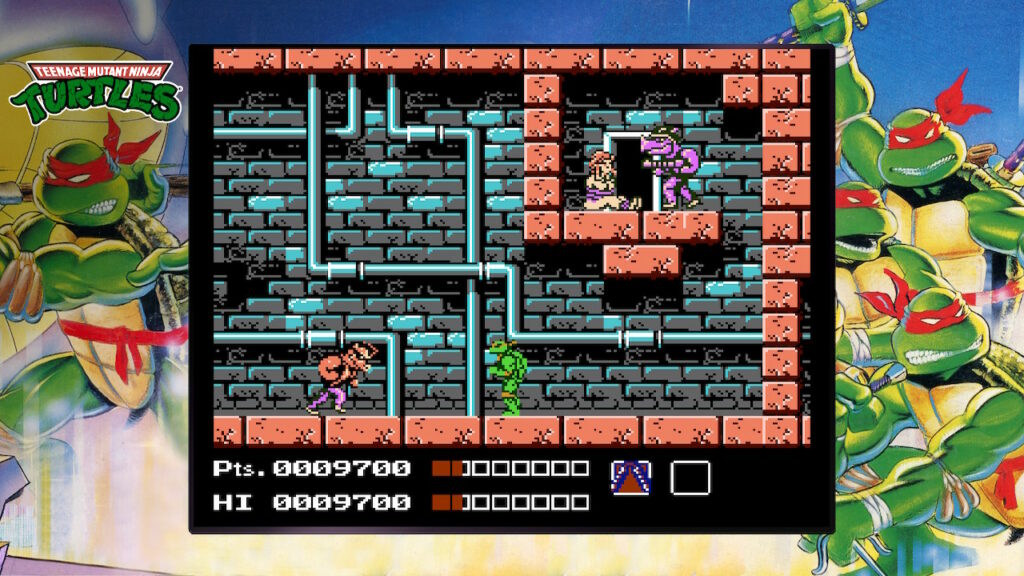
The four Turtles each have their own distinct situations that make them useful, so it’s in your interest to try and keep them all ali– err, “not captured” for as long as possible, but the game is by no means unbeatable if you happen to lose some of the more obviously useful characters. Sure, it might be a bit more challenging if you’re stuck using Raphael’s pathetically short-range sai attacks, but with careful play you can survive most situations.
There are various subweapons hidden in the side-scrolling stages, also, many of which allow access to ranged attacks of various types. Some of these are particularly effective against bosses, but since there’s no means of holding them aside for later — aside from simply not attacking other enemies who might be in your way — it can sometimes be tricky to hold on to them until they’re really useful.
The biggest problem with Teenage Mutant Ninja Turtles for the NES has always been its technical shortcomings. As we’ve already noted, the original NES version suffered from tremendous slowdown and sprite flicker when there were more than a few things on screen at once, and this really caused the game to look and feel like a janky mess.
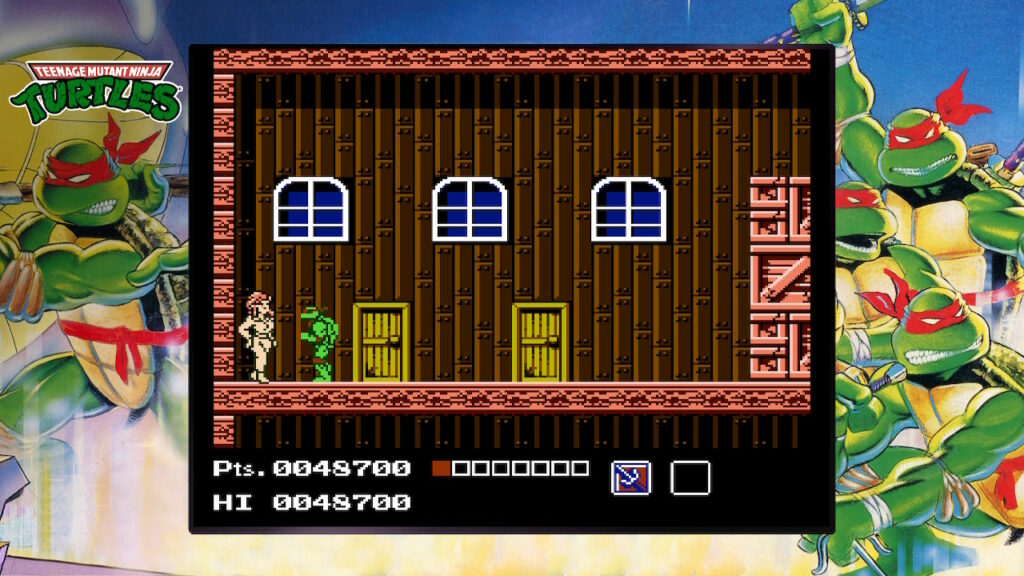
Thanks to Digital Eclipse’s use of their trademark Eclipse Engine to run the game in lieu of simple emulation, however, you can (optionally, but why would you not want to) “fix” the game so that it runs as it always “should have”. It’s remarkable how much more playable and enjoyable this makes the game — and even those who have historically bounced off Teenage Mutant Ninja Turtles for NES should probably give it another go with the enhancements of the Cowabunga Collection in place. Because at its core, it’s a solid game in a genre that Konami were generally pretty good at.
Be ready for a stiff challenge, though, because the other common criticism of Teenage Mutant Ninja Turtles for the NES is that it’s hard. And, indeed, it is hard — but no more so than other notoriously difficult NES titles such as the original Castlevania. Like most of these games, it’s about learning patterns and the best means of dealing with those patterns using the tools at your disposal. And if you eliminate the clunkiness that performance issues bring to the table, you eventually reach a point where you only have your own skills and knowledge of the game to blame when you fail!
So in answer to the question in the headline, yes, Teenage Mutant Ninja Turtles for the NES is eminently worth playing today — just maybe consider playing it as part of the Cowabunga Collection rather than on an original NES, and you’ll probably find yourself having a much better time than you might expect!
Teenage Mutant Ninja Turtles: The Cowabunga Collection is available now for PC via Steam, physically and digitally for Switch, physically and digitally for PS5, physically and digitally for PS4, and physically and digitally for Xbox One/Series blahdepoop.
Join The Discussion
Rice Digital Discord
Rice Digital Twitter
Rice Digital Facebook
Or write us a letter for the Rice Digital Friday Letters Page by clicking here!
Disclosure: Some links in this article may be affiliate links, which means we may earn a small commission if you make a purchase after clicking on them. This is at no additional cost to you and helps support Rice Digital!
- Letter from the Editor: passing the torch - June 30, 2023
- Super Woden GP 2 is looking promising - June 30, 2023
- Inti Creates is making a 32 bit-style Love Live action platformer - June 26, 2023





